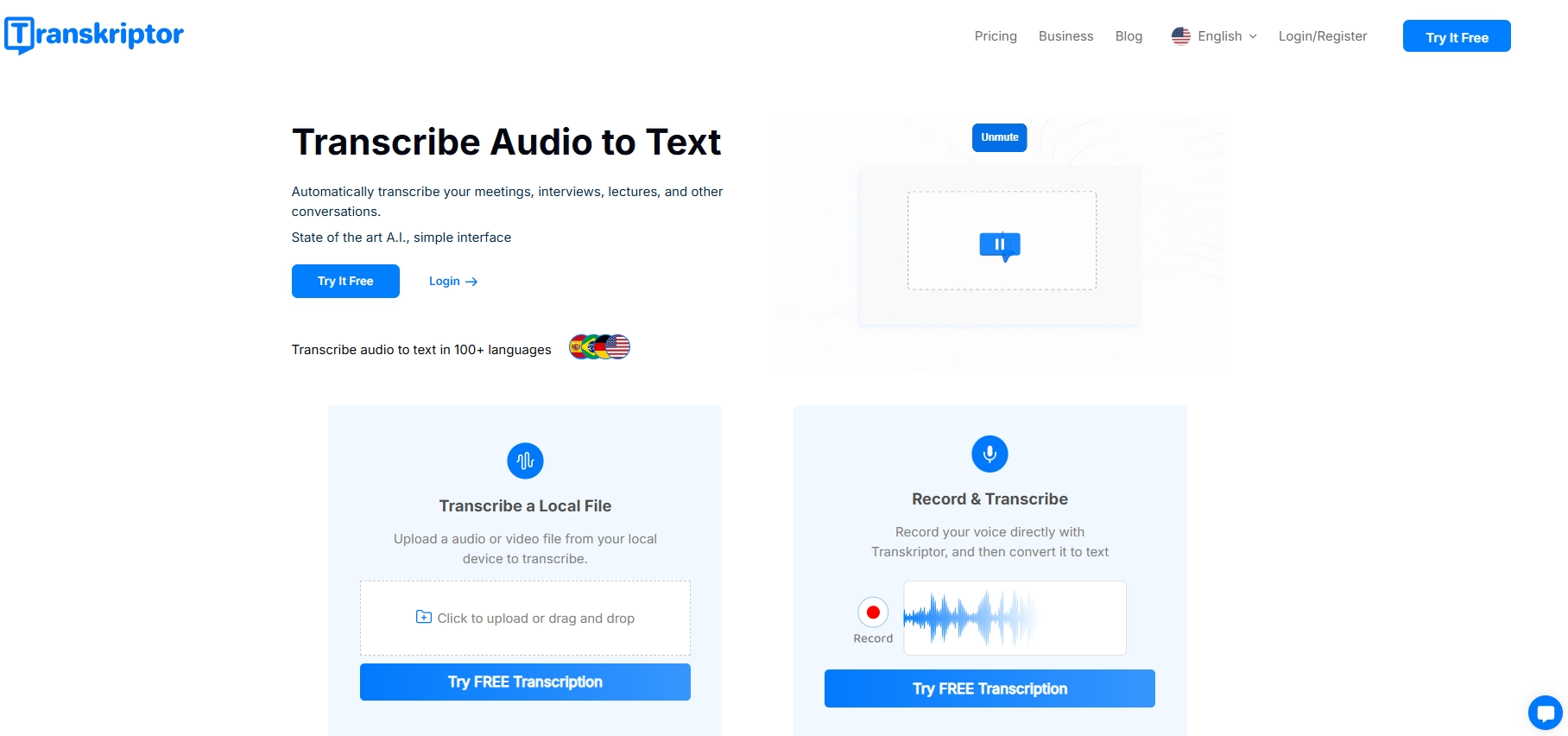Creating video content but not getting reach is a common issue among creators. If you are content with the video and its quality, there might be a lack of SEO. Search engines cannot crawl on a video and do not recommend your content to audiences looking for the information. This is where video documentation comes in handy.
Video documentation helps rank a video better and increases its reach. Therefore, it is crucial to prioritize the strategic inclusion of transcripts in your video. Learn everything about video documentation, from its importance to strategies, tools, and applications, and use it to monetize your video.

The Hidden Cost of Unorganized Video Content
In the past few years, the amount of recorded content has skyrocketed. In fact, according to Hubspot, around 91% of businesses use video as a marketing tool. But video content documentation is crucial, and the following are the consequences if you do not prepare one:
- Restrict Accessibility: Not transcribing videos makes them inaccessible for people with hearing loss or who watch videos on mute.
- Missed Opportunities in Content Reuse: The opportunity to reuse your content is limited without video documentation.
- Knowledge Gap: A transcript is easier to access and reference, but not a video.
Restrict Accessibility
The number of people with hearing impairments is ever-increasing. It means a large chunk of the population will not understand your content without a transcript. Also, many people prefer watching videos on mute, especially in public places. Without a transcript, you may struggle to reach a broad audience.
Missed Opportunities in Content Reuse
Video transcriptions inspire content creators to slice it up and turn it into something new. It can become a blog post, email campaign, or guide. It benefits video marketers to reach more audiences, improve SEO, and save time and resources. If you fail to create a video document, the opportunities to cater to your audience get limited.
Knowledge Gap
The video document creation is also pivotal in modern education and business. For example, recorded lectures allow students to access course material and study at their convenience. Meanwhile, transcripts make your video content more shareable.
Your audience can promote your content, quote parts of it, or share it completely. However, video content is more difficult to archive and reference than text documents. Over time, it reduces the longevity of information.

Smart Video Documentation Strategies
For your videos to connect right with your audiences, proper documentation is crucial. Its benefits include better information retention, increased engagement, and more. For that, the following strategies are vital:
- Beyond Basic Transcription: Make sure to edit the transcription and add visual elements to boost searchability and engagement.
- Timestamps and Chapter Markers: Adding timestamps to video documents makes it easier to find information.
- Metadata Enhancement Techniques: Accurate transcripts with keywords included in metadata help videos rank better.
Beyond Basic Transcription
While video-to-text conversion is helpful for marketers, simply writing out the spoken dialogues might not be enough. As per FCC, video captions must match the spoken words in a dialogue and convey sounds to the full extent possible.
However, many video documentation tools neglect critical visual elements like gestures, on-screen text, and context that encompasses the actual video meaning. This makes it insufficient for searchability, accessibility, or comprehension of the context, especially if the video contains complex information.
AI transcription accuracy varies widely depending on audio quality. Once you obtain the transcripts, review them thoroughly and make the necessary edits. Then, store them in a secure cloud for easy access.
Timestamps and Chapter Markers
Not many realize it, but timestamps are also incredibly useful in transcriptions. It improves accuracy and usability, especially for journalists, researchers, and legal professionals. You can quickly refer to specific points, saving time and effort by including timestamps or chapter markers. The ability to pinpoint any particular moment also allows for easy and precise content translation.
Metadata Enhancement Techniques
Documenting your video and including it in your metadata is also crucial. It makes the video searchable with the keywords included within the transcript. Some of the key techniques include:
- Avoid Duplicate Entries: Make sure the video transcript is unique, and there are no duplicate entries.
- Use Controlled Vocabularies: Implement controlled vocabularies by employing a standardized tag term.
- Maintain Accuracy: Completeness, accuracy, and alignment across multiple sources are crucial for maintaining consistency in metadata.

Unlocking Video Value with Transkriptor
Transkriptor is a leading tool that offers an efficient way to enhance your content. It simplifies the video transcription process, making it an essential tool for anyone looking to document their videos. It uses state-of-the-art AI technology to generate transcripts with precision. The results are up to 99% accurate.
Editing documents is also more straightforward with Transkriptor. The tool presents an intuitive interface that lets you ensure the text accuracy before uploading it on metadata. This further helps boost the search ability and accessibility of the video. Once your document is ready, you can download it in any format you need.
Key Features
- Multilingual Support: Transkriptor supports translations into more than 100 languages, including English, German, Hebrew, Arabic, and more.
- Secure Storage: Integrates with Google Drive or Dropbox to organize your documents in a secure manner. You can also share them with your colleagues or clients.
- AI Chat: As it generates transcripts, you can ask Transkriptor’s AI Chat to summarize them or create notes.
- Multiple Formats: Export your transcriptions with flexible formatting options. You can choose from Word, PDF, TXT, CSV, SRT, or copy directly for easy sharing.
How to Optimize Video Content for Maximum Impact
Video content is incredibly popular, as, according to Wistia, nearly 78% of businesses made videos in 2024. The reasons behind the popularity include accessibility, searchability, and better engagement. To make the video content more effective, you can do the following:
Creating Content Snippets
Creating snippets of your videos offers multiple benefits, including better audience reach, SEO, and higher click-through rates. These days, audiences have shorter attention spans, so these bite-sized pieces primarily cater to them.
This makes them ideal for quick content consumption on social media platforms. Documents from a video transcript software can come in handy. You can use the search functionality of Transkriptor to find a particular section.
Building a Searchable Video Library
It involves storing your videos in a structured system so you can access them easily using keywords or tags. You can use tools like Transkriptor to keep your videos organized with its cloud storage options. Even if your video includes sensitive information, SSL encryption and SOC compliance ensure security.
Cross-Referencing Systems
It primarily implies a method to link different video segments or two videos together. This allows users to navigate through related content within a large collection. A cross-referencing system is often achieved through annotations, timestamps, or dedicated video management platforms. You can use the video to document conversion tools and include relevant keywords so the audience can end up with similar content.
Advanced Video Documentation Applications
People do not just play videos to watch but also understand. Transcription can be of great help in that respect. So, one can use it to create training material and legal records.
- Training Material Creation: Businesses can use transcription software to generate accessible and searchable training materials.
- Legal Compliance and Records: Lawyers in law firms can document interviews or court proceedings to store them easily and securely.
- Content Monetization Opportunities: Integrating a video document helps a video rank higher, resulting in more views and more money.
Training Material Creation
Not only marketing, entertainment, or product demos, but as per Wyzowl, 20% of companies are already creating training videos. Automated video documentation workflow provides a flexible and affordable way to provide employee training. Rather than explaining company policies, duties, and more through video presentations, employers can provide documents and save time. Employees can go through them at any time at their convenience.

Legal Compliance and Records
AI-powered tools improve legal documentation by enhancing efficiency and accuracy. Lawyers in law firms can use these transcription tools to transcribe meetings, interviews, and court proceedings.
This not only helps reduce errors but also accelerates video content management. They can focus on other aspects of their work by minimizing mundane tasks like typing and proofreading. Tools like Transkriptor secure and organize their legal documents.
Content Monetization Opportunities
Video transcription also helps increase the engagement and organic reach of your videos. It helps search engines crawl through the keywords, which improves your ranking. This increases traction on videos and increases the number of views. Higher views can earn you money if they are available on platforms like YouTube, Twitch, and Vimeo.
Conclusion
Video documentation goes beyond a simple transcription. Minor errors can potentially impact your SEO by lowering the content quality and decreasing user engagement. It is crucial to edit and organize your transcripts so you can access them later.
Transkriptor is an advanced AI-based tool that creates accurate video transcripts in multiple languages. It also has a host of editing tools to make your transcripts SEO-friendly and engaging. So, use Transkriptor to document your videos and unlock the value of video content.


